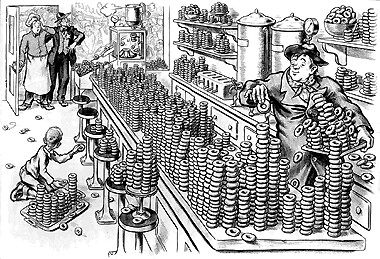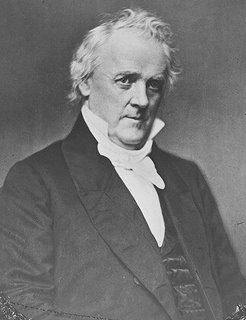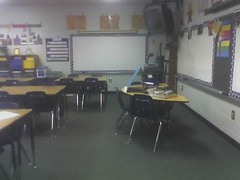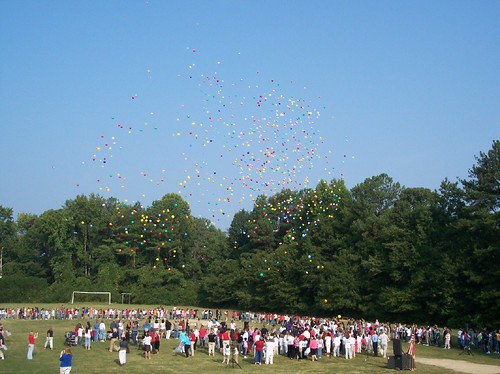
Though I wasn’t assigned a victim of 9/11 to post about from the 2996 Project, I decided that I would post my personal story of that day and dedicate it to those who lost their lives.
September 11, 2001 began like any other September school day; however, it was abnormally quiet since T.’s seat was uncharacteristically empty. He had not missed a day of school since we hard started around the first of August.
T. was my assigned rambunctious, outspoken, almost uncontrollable young man for the year. There is always at least one. He was a handsome ten year old who adored baseball, adored going to church, and was very in touch with his feelings. While his brain usually moved ahead of his feet by about ten steps he never intentionally meant to interrupt me for the five thousandth time in one class period, never meant to cause me frustration, and he never meant to get on my nerves. T. simply had no clue that a one-to-one ongoing conversation between a teacher and himself was not the proper procedure in a classroom with 24 other students.
He blurted out constantly attempting to finish my sentences, anticipate my questions, and interrupted his classmates everytime the notion slapped him in the head. He also had a problem many young men do…..he couldn’t sit still. His parents had long since solved the energy problem by making sure T. was signed up for every sport that came along. Unfortunately we don’t run bases in my classroom.
After the second week of getting used to T.’s energy level he and conferenced and we worked out a management plan for Elementaryhistoryteacher’s sanity. He and I developed hand signals so that he would know when I had had my limit of interruptions. He honestly didn’t realize what he was doing. Sometimes kids have to be taught social limits regarding space and conversation limits. We worked out a plan where T. could stand at this seat every so often to ease any discomfort as he sat. I arranged for his seat to be towards the back of the group so he wouldn’t interfere with another student. T. seemed grateful for the strategies as he commented, “Gee, maybe this will work. Lord knows you were ready to strangle me yesterday.”
T. was right. So on that September morning his seat screamed at me in the quiet as the class proceeded through their morning work.
We were about to transition into Social Studies when T. suddenly burst through the door out of breath speaking as fast and as loud as he possibly could. “Oh my gosh, Elementaryhistoryteacher, a plane crashed in New York City and the whole place is on fire.”
It was very confusing to say the least. I mean where had he suddenly come from? The classroom had gone from very orderly and quiet to some town crier bursting through the door screaming New York City was on fire. My mind was attempting to process all of this. Where had T. been? Why was he just now coming to me? What had he been doing? What is this about a plane? Huh?
I grabbed T. by the shoulders. “Darlin’, what are you talking about?”
T. was still trying to speak between deep breaths. “I don’t…..know. The man…..said a plane……had crashed…….in New York.”
“What man?” I quizzed.
“The man…..on the radio,” T. gulped.
The room was totally disrupted by now with students watching my question and answer session with T. their heads bobbing back and forth like they were watching a tennis match.
“Back up, T.,” I lobbed, “Where have you been?”
T fired back, “The dentist. By the way, Dr. C. says hello.” Dr. C. is a local dentist and I had taught his son a couple of years before. He was always sending my students back to school with a “Hey, how ya’ doing?” message.
I countered impatiently with, “Yes, yes, hey to Dr. C.” I waved my hand to the air. “T., tell me what’s going on?”
I was getting exasperated. The rhythm of my class had been disrupted, precious instructional minutes were being lost, and I still didn’t know what was going on.
Finally, T. served up, “On the way over here from Dr. C’s office the guy on the radio said the World Tower or something has been hit by a plane.”
“The World Trade Center, is that what you mean?” I struck back.
“Yeah, I think so.”
I walked over to the television, hit the on button and switched the channel to CNN……the only twenty-four hour new channel our school could get at the time. The image hit me like a ton of bricks.
“Oh my gosh, T. You’re right.” I said as I backed up from the screen. The room got very still and we listened to the announcer. It was still early enough that both towers were still standing. The announcer was still getting information in his earpiece so he could explain what what was going on.
I offhandedly began telling students that many years before a small plane had hit the Empire State Building and the same thing had probably happened again. I told them that, but I wasn’t so sure.
I stepped into the hallway and got the attention of my teaching partner. I lovely woman who was still trying to figure this Southern gal out considering she grew up in New York. Her eyes immediately filled up with tears as she pulled her door behind her and mouthed the words, “Those bastards!” to me.
“What do you mean?” I asked.
“I guarantee you this is the same group who tried to take the towers down before.” We exchanged a few more words before she stepped back in her room to turn on her television as T. came to my classroom door.
“Elementaryhistoryteacher,” he said. “The tower just fell.”
“Don’t be silly,” I told him as I reentered my room. A few of the girls had heard me and were agreeing with T.
I looked at the screen and there was nothing there but one tower and smoke. It simply did not register with me the building were gone. The announcer was speaking about planes, large planes had done this. My mind screamed. Jetliners, how could two jetliners hit the towers on the same day?
Another student asked, “Elementaryhistoryteacher, what’s the pentagram?”
A bossy little girl shot back at him, “Pentagon, pentagon.”
I didn’t take my eyes from the television as I said, “Ummm, it’s a building in Washington D.C. where all the branches of the armed forces have their offices including the Secretary of Defense. Why?”
“The guy on television said a plane crashed into it. It’s on fire too.”
I closed my eyes. I could not deny something was going on. We had to be under attack, but from who? I wanted to curl up into a ball and cry. I wanted to get my purse and go get my kids. I wanted my husband. I wanted my mother and father. I couldn’t. I was the teacher. I was the adult in charge. I couldn’t let them see me upset. I had to turn off the television and get on with our day.
I walked over to the set at the same time my vice principal came into my room. She smiled and motioned to the television and said, “Turn it off.”
“I know,” I said. “I was about to.” We both knew this wasn’t the same thing as our first walk on the Moon or MLK’s funeral. Our students didn’t need to see anymore unfolding events. Luckily they didn’t see any bodies falling from the sky and they had not yet begun to show footage of the plane flying into the tower and the resulting explosion. It was bad enough they witnessed the fall of the building.
Some of the children, being children, went right back to what they were doing. T. walked over to me and said, “Elementaryhistoryteacher, we need to pray for those people. There are people who died this morning. It’s so sad.”
“Yes, T. It’s so sad. T, you know I can’t ask you to pray.”
“I know, but I don’t think you’ll stop me. Will you?”
“No, I won’t. Do what you need to do.”
T. walked around the room to every student saying, “C’mon guys. We need to pray for those people. Let’s hold hands and get in a circle.”
Every boy and girl stood up, formed a circle and grabbed each others hands. No one argued about holding a girls hand or a boy’s hand. Boys didn’t balk at holding each other’s hands. They just did it. Once they were all were in place each one turned and looked my way as if to say, “C’mon!”. I was sitting alone at a student’s desk confused, and needing information so terribly. At this point all I knew was someone had an undetermined number of American planes, some were missing, some had crashed horribly, and my husband who works in the air freight industry had his office very near the Atlanta airport.
As the kids looked at me two students broke ranks and opened up a place for me. They just stood there looking at me. I just sat there looking at them. Finally, I got up and joined them in their prayer circle. I looked across the circle to T. and nodded at him. He began his very heartfelt, innocent prayer for the people in the buildings, the people in the planes, the people on the ground, our president and other government leaders and as he ended each child went around the circle and said something squeezing the next person’s hand as they were through. Finally, the prayers ended up at T. again and he finalized the prayer.
I don’t remember what we did that day. I don’t remember what I taught, or if I taught. An hour later the exodus started. Child after child was called for check-out until I only had three or four left.
Finally, the last student was on a bus and I was on my way home. Hubby had contacted me earlier in the afternoon to tell me he was ok and had gone to get both our kids. They were all at home waiting for me.
The ride home was so eerie. The message boards over the normally backed-up Atlanta interstates flashed the words NATIONAL EMERGENCY. The most surreal thing was there was no traffic on the streets or in the sky. The skies around Atlanta’s busy airport are always filled with planes. You can always look up and find at least one in any direction you gaze. Not that afternoon. It was so quiet. It was four p.m. before I really knew what had happened and saw the same footage that everyone else had seen over and over all afternoon.
I learned many things that day. I learned that my country was as vulnerable as any other. I learned that your life can change direction in one single instant. I learned that citizens can put politics aside and come together in one voice when they realize they have a common enemy. I learned the frantic fear of wondering where your family is and realized we would need an emergency game plan. I learned that people hate me just because I was born an American.
The most important thing I learned, however, was from a ten year old young man and his fellow classmates who did what they felt in their hearts and lived up to their convictions no matter the consequence.
 I don’t know about you, but this has been an exausting week for me. I have more and more “things to do” than things I can count as “ta-dahs” (finished items). Nine week benchmark tests are looming and after 11 days of testing we are furiously attempting to tie up loose content ends.
I don’t know about you, but this has been an exausting week for me. I have more and more “things to do” than things I can count as “ta-dahs” (finished items). Nine week benchmark tests are looming and after 11 days of testing we are furiously attempting to tie up loose content ends. 
















